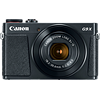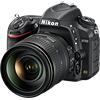Main
Model
Price
Advantages
launch
Announced
Body type
Camera subcategory
Sensor
Effective pixels
Max resolution
Sensor size
Sensor type
Processor
Image ratio w:h
Sensor photo detectors
Other resolutions
Image
ISO
White balance presets
Custom white balance
Image stabilization
Uncompressed format
JPEG quality levels
Boosted ISO (minimum)
Boosted ISO (maximum)
Photography features
Minimum shutter speed
Maximum shutter speed
Aperture priority
Shutter priority
Manual exposure mode
Subject / scene modes
Built-in flash
Flash range
External flash
Flash modes
Continuous drive
Self-timer
Metering modes
Exposure compensation
WB Bracketing
AE Bracketing
Screen / viewfinder
Articulated LCD
Screen size
Screen dots
Touch screen
Screen type
Live view
Viewfinder type
Viewfinder coverage
Viewfinder magnification
Videography features
File Format
Videography notes
Microphone
Speaker
Resolutions
Optics & Focus
Focal length (equiv.)
Optical zoom
Maximum aperture
Autofocus
Digital zoom
Manual focus
Normal focus range
Macro focus range
Number of focus points
Lens mount
Focal length multiplier
Physical
Weight (inc. batteries)
Dimensions
Environmentally sealed
Battery
Battery details
Battery Life (CIPA)
Storage
Storage types
Connectivity
USB
HDMI
Microphone port
Headphone port
Wireless
Wireless notes
Remote control
Other features
Orientation sensor
Timelapse recording
GPS
GPS notes
Samples
Videos
Summary
The Nikon D750 highest resolution of 6016 x 4016 pixels (24 megapixels) is better in comparison with the Canon PowerShot G9 X Mark II highest resolution of 5472 x 3648 pixels (20 megapixels). The Nikon D750 has larger sensor than the Canon PowerShot G9 X Mark II: Full frame (35.9 x 24 mm) versus 1 (13.2 x 8.8 mm). This is very important specification of this camera as large sensor allows the camera owner to make pictures of the higher quality. The Nikon D750 offers a wider ISO range of 100-12800 than 125-12800 ISO range of the Canon PowerShot G9 X Mark II. Such ISO range allow the camera owner to make better pictures in dim light situations. The Nikon D750 offers more presets of white balance - 12. This option gives the camera owner more control over colour. The Canon PowerShot G9 X Mark II provides better 4x digital zoom.
The Nikon D750 is equipped with tilting LCD which will allow the camera owner to make great selfie photos. The Nikon D750 display is better as it has more screen dots 1,229,000 in compare to 1,040,000 dots of the Canon PowerShot G9 X Mark II display. The higher dot count display is better for reviewing images on your camera. The Nikon D750 is produced with bigger size of the display - 3 inches. The Canon PowerShot G9 X Mark II is produced with a touch screen.
The Nikon D750 supports external flash. An external flash provides perfect control over the exposure and lighting of the subject in dim light and in bright light situations when the camera owner needs to fill-flash. The Nikon D750 is weather sealed which means that the camera will be safe even uncovered if the photographer is out photographing in the rain and snow. The Nikon D750 battery life is better than the Canon PowerShot G9 X Mark II battery life. In accordance with CIPA standards the camera owner will be able to make 1230 photos with the D750 and only 235 with the PowerShot G9 X Mark II. The Canon PowerShot G9 X Mark II weighs 206g that is 544g less in comparison with the weight of the Nikon D750. The Nikon D750 can utilize optional accessory GPS devices. Recording GPS data can be useful if you like to travel, to be able to go into the photo metadata and find out exactly where a photo was taken.
The Nikon D750 has 16 advantages and the Canon PowerShot G9 X Mark II only 4 so the D750 will become the best buy. Get the lowest price on Amazon.


